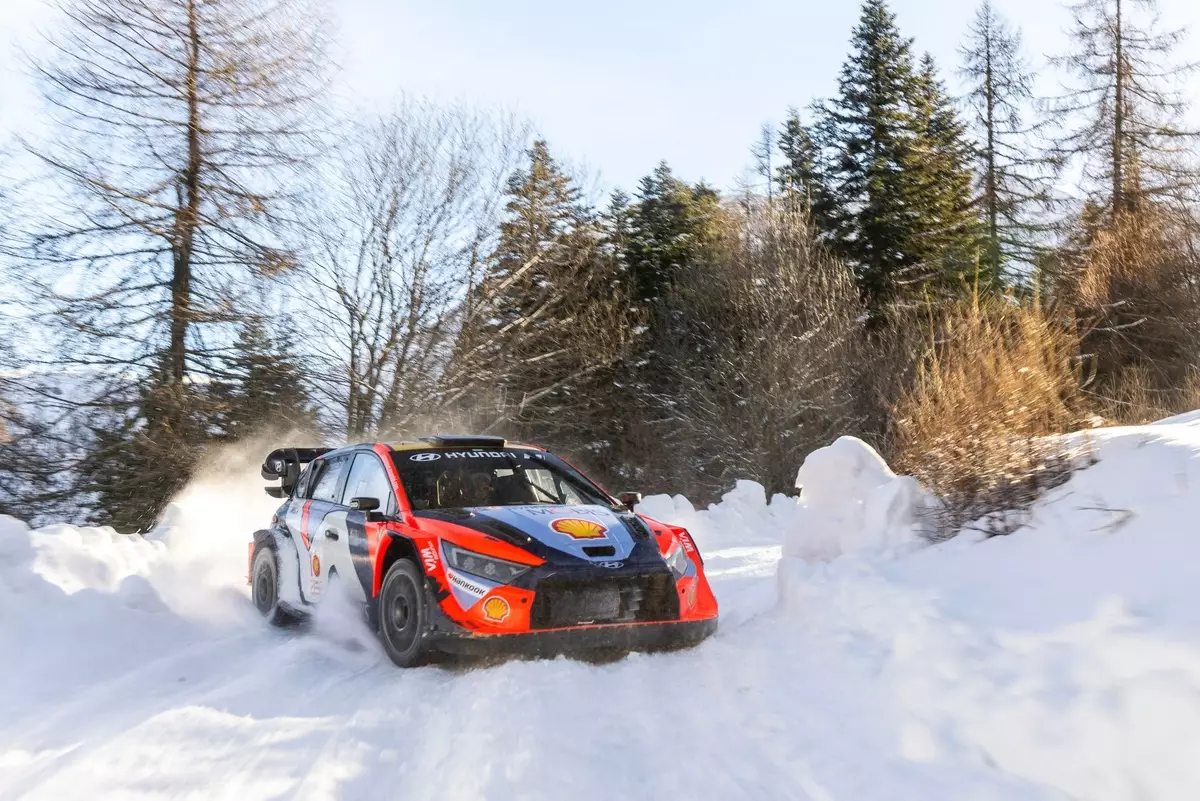The World Rally Championship (WRC) is undergoing a substantial transformation for the 2025 season, heralding a new era with the introduction of simplified car specifications. This change, primarily driven by the removal of hybrid power from Rally1 cars, is generating varied reactions within the motorsport community. Leading the conversation is Ott Tanak from Hyundai Motorsport, who emphasizes that the 2025 cars are “much simpler” and “a lot easier” to drive. This article delves into the implications of these new regulations, their reception among drivers, and the anticipated changes for the championship.
The FIA has taken a bold step by eliminating hybrid technology from the current generation of rally cars. The decision impacts performance directly, stripping away an additional 130 horsepower that hybrid units contributed to the turbocharged 1.6-liter engines. While this loss in horsepower means the cars are expected to be slower overall, it comes hand-in-hand with a significant weight reduction of approximately 87 kilograms. This lightness translates to enhanced agility, making the cars nimbler and more responsive on unique rally terrains.
Tanak notes that the experience of driving these new vehicles is reminiscent of older generations of rally cars. He asserts that the complex strategies associated with hybrid systems have been replaced by a more straightforward driving experience. The focus now is back on the fundamental aspects of rally driving, a sentiment that resonates with many long-time fans and drivers of the sport.
The reversion to simpler constructs presents an intriguing paradox. Although drivers will cope with reduced power thanks to the regulatory changes, the enhanced control and weight reduction might indeed enhance the thrill of driving. Tanak argues that a lighter car allows more playfulness, making navigating the diverse challenges of rally racing enjoyable and engaging. The traditional essence of rallying—requiring skill, finesse, and adaptability—can potentially be better embraced without the complexities introduced by hybrid power.
This transformation in car dynamics has led to a refreshing air of optimism within the WRC paddock. Compounding this feeling is the change in tire suppliers to Hankook, a factor that presents its own set of uncertainties. Nevertheless, drivers like Tanak express confidence in the adaptability to new characteristics brought about by these tires. He remarks that this familiarity and comfort with both the car and team will facilitate a smoother transition into the competitive season.
As the Monte Carlo rally—a storied and challenging event—approaches, it’s evident that drivers will need to summon their experience and skill to navigate its treacherous yet exhilarating stages. Tanak reflects on his prior relationships with various teams and cars, highlighting the challenges of starting anew each season. The 2025 season, however, represents a departure from this trend for him, as he finds himself within a more stable environment both regarding car and team dynamics. Importantly, this experienced comfort level plays a crucial role not only in performance but also in driver confidence.
Tanak’s sentiments underline the importance of continuity in a driver’s journey. With reduced uncertainty about both the car and the regulatory changes, he feels poised for success this season—an assertion that many teams will no doubt echo as they prepare for the forthcoming challenges.
The debate surrounding the merits of hybrid versus traditional rallying figures prominently in ongoing discussions among enthusiasts and insiders alike. Proponents of retaining hybrid systems argue that the added complexity promotes technological advancement, whereas traditionalists champion the purity of simpler technologies. The shift to 2025 specifications embodies this classic rally framework while also embracing innovation in the form of new and potentially high-performing tires.
As the championship unfolds, the balance between tradition and modernity will be pivotal. The lighter, simpler cars promise to revive the spirit of rallying, yet questions about performance benchmarks remain to be answered, particularly in challenging events like Monte Carlo.
The 2025 WRC season ushers in a fresh perspective on rallying—one that emphasizes simplicity, agility, and driver connection. With this evolution, the sport may reignite its fundamental excitement, bridging the gap between the past and future of rallying. The excitement surrounding the Monte Carlo rally hints at the potential for thrilling encounters, as drivers adapt to their new rides and reclaim the essence of what makes rallying truly captivating.


Leave a Reply